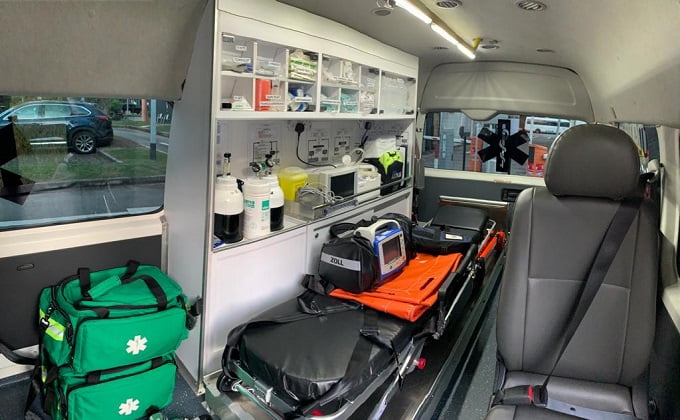Singapore is known for its top-indent healthcare system and infrastructure. Among the essential healthcare services available in the city-state, non-emergency ambulance services play a crucial job in guaranteeing the safe and comfortable transportation of patients who don’t need immediate medical attention but still need professional care during transit.
Whether you are a patient needing non emergency transport or somebody responsible for arranging such services, this complete aide will assist you with making informed choices while picking a non emergency ambulance in Singapore.
Understanding Non Emergency Ambulance Services
Non emergency ambulance services are intended for patients who require medical supervision and assistance during transportation but are not in critical condition. These services are often utilized for:
Medical Appointments: Patients who need to attend regular medical check-ups or appointments but have mobility issues.
Post-Surgery Transport: Individuals recuperating from surgery may require non-emergency ambulance services to guarantee their safety during transit.
Hospital Discharge: Patients being discharged from a hospital who require medical attention.
Elderly Patients: Seniors with ongoing medical circumstances may require non-emergency ambulance services for regular hospital visits.
Non-Critical Illnesses: Those with non-perilous circumstances that expect transport to a healthcare facility.
Key Factors to Consider While Picking Non Emergency Ambulance Services
Make sure to follow these guidelines when choosing non emergency ambulance services in Singapore:
Reputation and Accreditation
While entrusting the well-being of a friend or family member to a non emergency ambulance service in Singapore, the provider’s reputation and accreditation ought to be at the forefront of your evaluation.
A service provider’s reputation is an impression of its obligation to greatness. Start by digging into their reputation through online research. Explore reviews, testimonials, and feedback from past clients. Positive reviews often indicate reliability, professionalism, and a history of satisfied customers. Negative feedback can be equally valuable, offering experiences in areas where the provider may require improvement.
Beyond reputation, it’s vital to search for official acknowledgment. Accreditations and certifications from healthcare authorities are a testament to the provider’s adherence to industry standards. Accredited providers have gone through rigorous evaluations, assuring you of their obligation to quality care and safety. Guarantee the service provider has credentials from perceived organizations, like the Ministry of Health or other relevant governing bodies.
Type of Services Offered
Non emergency ambulance service providers cater to a range of patient requirements. Tailoring your decision to align with the specific necessities of the patient is paramount.
Various providers offer varying degrees of service. Some specialize in basic transportation, guaranteeing safe travel from point A to B. In contrast, others offer an exhaustive set-up of medical care during transit. The latter is particularly valuable for patients with specific medical circumstances requiring monitoring or intervention during the journey.
Think about the patient’s unique requirements. Do they require bariatric transport for individuals with obesity, neonatal care for newborns, or specialized equipment for mobility-impaired patients? Guarantee the provider can meet these prerequisites.
Availability and Response Time
The unpredictable nature of health demands that non emergency ambulance services be readily available and receptive to your requirements. Crises don’t adhere to plans. Check assuming the service provider offers 24/7 availability. Timeliness and flexibility are especially critical while dealing with non-emergency cases, as health conditions can change startlingly.
Brief response times are not exclusively the domain of emergency services. Ask about the provider’s average response time, as this can make a significant distinction in guaranteeing patient safety, especially during unforeseen complications.
Qualified Medical Personnel
The skill of the medical personnel aboard the ambulance is non-negotiable. Check that the ambulance is staffed by qualified professionals, like paramedics or nurses. Their attitude is vital in handling any medical requirements that may arise during the journey. Additionally, ask about their training and qualifications to guarantee they can give the necessary care successfully.
A well-equipped ambulance can mean the contrast between a smooth, comfortable journey and one fraught with challenges.
Insurance Coverage
Guaranteeing that the non emergency ambulance service is covered by the patient’s health insurance plan is a crucial financial consideration. It can significantly impact the cost of the service and the patient’s out-of-pocket expenses.
Start by contacting the patient’s health insurance provider to ask about the specifics of their coverage. Ask about the degree to which non-emergency ambulance services are remembered for the strategy. Insurance plans can vary broadly, and not all may cover this type of service.
Understand the financial implications, like deductibles, copayments, and any cutoff points on the number of excursions covered by the insurance plan. Realizing these details will assist you with estimating the potential cost to the patient.
If the service is partially covered or not covered at all, talk about choices with the service provider. They may offer payment plans or have recommendations for other financial assistance assets.
Safety and Hygiene Standards
Patient safety and hygiene standards are paramount when choosing a non-emergency ambulance service, particularly for patients with compromised invulnerable systems or those vulnerable to infections.
Ask about the service provider’s protocols for maintaining a clean and safe climate inside the ambulance. This incorporates regular sanitation techniques and infection control measures. Ask about the condition and cleanliness of the actual ambulances. Well-maintained vehicles are more averse to present hygiene risks to patients.
Check assuming that the service provider agrees with relevant healthcare regulations and standards related to safety and hygiene. They ought to be able to give documentation of their adherence to these standards. Think about the professionalism of the medical personnel, as their behavior and practices can impact the safety and comfort of the patient during transit. Guarantee they follow appropriate hygiene protocols and handle medical equipment correctly.
Reviews and Testimonials
Reviews and testimonials from past clients offer important pieces of information about the service provider’s performance and the experiences of various patients and their families.
Look for online reviews on platforms like Google, Yelp, or healthcare-specific review websites. Focus on rehashing subjects in the reviews, both positive and negative.
Reaching the service provider and raising references or contextual investigations is something to ponder. This can give more far-reaching subtleties on their history and their ability to fulfill specific patient necessities.
Connect with companions, family members, or support bunches who might know about Singapore’s non-emergency ambulance services. They can make ideas based on their own encounters and direct depictions of their dealings with service providers. Despite the fact that reviews and testimonials can be educational, remember that they ought to be considered with different components like certification and credentials while settling on your choice.
Cost and Billing
Understanding the non emergency ambulance service’s estimating strategy is basic for limiting unforeseen charges.
Demand a nitty gritty clarification of the valuing structure from the service provider. Base rates, payments for extra medical staff, and any equipment costs ought to be in every way referenced. Ask about any potential extra costs that might be connected with specific circumstances, for example, more prominent mileage or longer wait times.
Check for mileage or longer wait time costs and that the value information is clear. Request an explanation on any things that are not referenced. Look at the many highlights of billing, like due dates, invoicing frequency, and payment choices. It is basic to have a full understanding of the billing framework to abstain from any billing-related surprises. Consider getting various offers from various service providers to break down rates and services given.
Also Read – Bridging the Gap: Private Ambulance Service’s Role in Remote Areas

